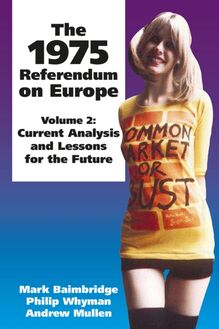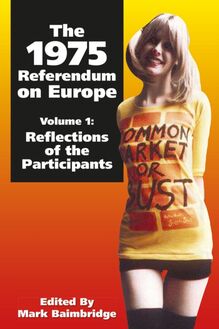-
 Univers
Univers
-
 Ebooks
Ebooks
-
 Livres audio
Livres audio
-
 Presse
Presse
-
 Podcasts
Podcasts
-
 BD
BD
-
 Documents
Documents
-
- Cours
- Révisions
- Ressources pédagogiques
- Sciences de l’éducation
- Manuels scolaires
- Langues
- Travaux de classe
- Annales de BEP
- Etudes supérieures
- Maternelle et primaire
- Fiches de lecture
- Orientation scolaire
- Méthodologie
- Corrigés de devoir
- Annales d’examens et concours
- Annales du bac
- Annales du brevet
- Rapports de stage
La lecture à portée de main
Vous pourrez modifier la taille du texte de cet ouvrage
Découvre YouScribe en t'inscrivant gratuitement
Je m'inscrisDécouvre YouScribe en t'inscrivant gratuitement
Je m'inscrisEn savoir plus
Vous pourrez modifier la taille du texte de cet ouvrage
En savoir plus

Description
Informations
| Publié par | Andrews UK |
| Date de parution | 07 novembre 2016 |
| Nombre de lectures | 0 |
| EAN13 | 9781845406301 |
| Langue | English |
Informations légales : prix de location à la page 0,0674€. Cette information est donnée uniquement à titre indicatif conformément à la législation en vigueur.
Extrait
The 1975 Referendum on Europe
Volume 1: Reflections of the Participants
Mark Baimbridge (Editor)
2016 digital version converted and published by
Andrews UK Limited
www.andrewsuk.com
Copyright © Mark Baimbridge et al. 2007
The moral rights of the authors have been asserted.
No part of any contribution may be reproduced in any form without permission, except for the quotation of brief passages in criticism and discussion.
Imprint Academic, PO Box 200, Exeter EX5 5YX, UK
Acknowledgements
There are many people to thank for their input into making this book possible. Firstly, Anthony Freeman of Imprint Academic for his immediate support for this project and patience over the duration of its development. Secondly, this book could not have been completed without the many and varied contributions. Seeking to undertake a project focusing upon an event that occurred some 30 years ago has posed inevitable difficulties as the march of time has severely depleted the number of participants still able to provide their first-hand account of the Referendum. Thirdly, my colleagues at the University of Bradford in the Bradford Centre for International Development and the Centre for European Studies for their support for my research on European integration and the work of the multidisciplinary European Economies Research Unit (EERU) of which this is a prime example of the intersection between political science and economics. Finally, I owe a deep sense of gratitude to my family for their support and forbearance during the preparation of this book. It is to them that this book is dedicated: Mary, Ken and Beibei.
Any remaining errors and omissions are solely attributable to me.
Haworth
April 2006
European Integration Timeline
From its beginnings, half a century ago, in the immediate aftermath of the Second World War, through the expansion of the seventies and eighties and the great debate surrounding the Maastricht Treaty, here we highlight some of the key events which have shaped the development of the EU towards closer integration.
1948
The Organisation for European Economic Cooperation (OEEC) is set up in Paris in April 1948, co-ordinating the distribution of the Marshall Plan financial aid which will amount to $12.5 billion from 1948 to 1951. The OEEC consists of one representative from each of the 17 Western European countries which join the organisation. In May 1948 in The Hague, the Congress of Europe (a meeting of delegates from 16 European countries) agree to form the Council of Europe with the aim of establishing closer economic and social ties
1951
The European Coal and Steel Community (ECSC) is established by the signing of the Treaty of Paris in April 1951. Along with France and West Germany, Italy, Belgium, Luxembourg and The Netherlands have also chosen to join the organisation. Members of the ECSC pledge to remove all import duties and quota restrictions on the trade of coal, iron ore, and steel between the member states
1952
The European Defence Community (EDC) Treaty is signed by France, West Germany, Italy, Belgium, Holland and Luxembourg in May 1952. It includes the provision for the formation of a parallel European Political Community (EPC). However both initiatives are destined to founder since the French National Assembly never ratifies the EDC Treaty, finally rejecting it in August 1954
1955
The process of further European integration is given fresh impetus by a conference of ECSC foreign ministers at Messina, Italy, in June 1955. The meeting agrees to develop the community by encouraging free trade between member states through the removal of tariffs and quotas. Agreement is also reached to form an Atomic Energy Community to encourage co-operation in the nuclear energy industry
1958
The two Treaties of Rome are signed, establishing the European Economic Community (EEC) and the European Atomic Energy Community (Euratom). As well as stipulating the eventual removal of customs duties on trade between member countries (over a period of 12 years) the EEC Treaty sets out allow the free movement of workers, capital and services across borders and to harmonise policies on agriculture and transport
1960
At the Stockholm Convention in January 1960 Austria, Britain, Denmark, Norway, Portugal, Sweden and Switzerland form the European Free Trade Association (EFTA). The objective of EFTA is to promote free trade but without the formal structures of the EEC
1961
UK applies to join the EEC.
1963
British application for EEC membership fails.
1967
UK submits second application to join EEC
1968
Customs union completed and Common Agricultural Policy enacted.
1972
In October, following the recommendations of the Werner Report, the EEC launches its first attempt at harmonising exchange rates. The mechanism adopted is the so called ‘snake in the tunnel’ whereby participating governments are required to confine the fluctuations of their currencies within a range of +/-1% against each other. The value of the group of currencies (the snake) is also to be maintained within a range of +/-2.25% against the US Dollar (the tunnel). Countries requiring assistance to keep their currencies within the required band may receive help only in the form of loans
1973
Denmark, Ireland and the UK join the EEC.
1975
UK referendum supports staying in EEC.
1978
At a summit in Bremen in July, the French and West German governments announce their intention to create the European Monetary System (EMS). At the centre of the EMS is the European Currency Unit (ECU). The value of the ECU is to be derived from a weighted basket of all participating currencies with the greatest weighting against the West German mark
1981
Greece joins the EC.
1986
Portugal and Spain join the EC.
1986
In October, following the recommendations of the Werner Report, the EEC launches its first attempt at harmonising exchange rates. The mechanism adopted is the so called ‘snake in the tunnel’ whereby participating governments are required to confine the fluctuations of their currencies within a range of +/-1% against each other. The value of the group of currencies (the snake) is also to be maintained within a range of +/-2.25% against the US Dollar (the tunnel). Countries requiring assistance to keep their currencies within the required band may receive help only in the form of loans
1990
UK joins EMS.
1992
At a summit of the European Council in Maastricht, Holland, the Treaty on European Union (TEU), also known as the Maastricht Treaty, is signed. Originally intended to include a declaration of an intention to move towards federal union, at Britain’s insistence this aspect is played down. Subsequent to the signing of the Maastricht Treaty, the European Community is referred to as the European Union (EU).
UK leaves EMS.
1993
The Single European Market takes effect. Trade tariffs are scrapped, but Duty Free shopping remains until 1999.
1994
Stage 2 of EMU is initiated on January 1st with the establishment of the European Monetary Institute (EMI) to oversee the co-ordination of the monetary policies of the individual national central banks. The EMI will also work towards the introduction of stage 3 by organising the creation of the European Central Bank
1995
Austria, Finland and Sweden join the EU, bringing membership to 15. The Schengen agreement comes into force and scraps border controls. UK and Ireland stay out of the agreement.
1997
Heads of Government draft a new agreement in Amsterdam which updates the Maastricht Treaty and prepares the EU for its eastward expansion. Qualified majority voting is introduced into new areas, reducing individual countries’ powers to veto new measures.
1998
At the beginning of May, at a summit of EU officials and heads of state in Brussels, the announcement is made as to which countries will participate in the launch of the euro the following January. In June the European Central Bank (ECB) is established in Frankfurt, Germany. The ECB together with the national central banks of the 15 EU member states form the European System of Central Banks (ESCB) which will be responsible for setting monetary policy for the euro countries and managing those countries’ foreign reserves.
The EU opens accession negotiations with Hungary, Poland, Estonia, the Czech Republic, Slovenia and Cyprus.
-
 Univers
Univers
-
 Ebooks
Ebooks
-
 Livres audio
Livres audio
-
 Presse
Presse
-
 Podcasts
Podcasts
-
 BD
BD
-
 Documents
Documents
-
Jeunesse
-
Littérature
-
Ressources professionnelles
-
Santé et bien-être
-
Savoirs
-
Education
-
Loisirs et hobbies
-
Art, musique et cinéma
-
Actualité et débat de société
-
Jeunesse
-
Littérature
-
Ressources professionnelles
-
Santé et bien-être
-
Savoirs
-
Education
-
Loisirs et hobbies
-
Art, musique et cinéma
-
Actualité et débat de société
-
Actualités
-
Lifestyle
-
Presse jeunesse
-
Presse professionnelle
-
Pratique
-
Presse sportive
-
Presse internationale
-
Culture & Médias
-
Action et Aventures
-
Science-fiction et Fantasy
-
Société
-
Jeunesse
-
Littérature
-
Ressources professionnelles
-
Santé et bien-être
-
Savoirs
-
Education
-
Loisirs et hobbies
-
Art, musique et cinéma
-
Actualité et débat de société
- Cours
- Révisions
- Ressources pédagogiques
- Sciences de l’éducation
- Manuels scolaires
- Langues
- Travaux de classe
- Annales de BEP
- Etudes supérieures
- Maternelle et primaire
- Fiches de lecture
- Orientation scolaire
- Méthodologie
- Corrigés de devoir
- Annales d’examens et concours
- Annales du bac
- Annales du brevet
- Rapports de stage







